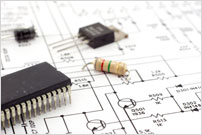April 2015 Issue
A summary of this month's contents.
Rubidium Frequency Standard
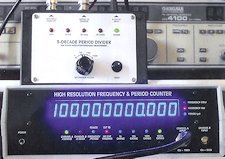
This super-precise 10MHz frequency standard will grace any enthusiast’s workbench. Intended for the resourceful constructor, this project utilises a rubidium-vapour frequency standard along with a buffer circuit and power supply to create an ultra-accurate frequency standard for a very low cost, all things considered!
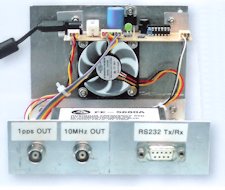
It relies on the constructor sourcing an appropriate used rubidium-vapour standard from ebay, and our article is packed with lots of practical advice and experience to help you make the right choice and get it up and running. A fascinating challenge for the advanced experimenter.
USB-RS232C Interface
 Modern PCs and laptops only provide USB ports for external peripherals but older legacy devices such as some graphics tablets, GPS receiver modules etc use a traditional RS-232C interface and cannot be connected directly to a modern computer.
Modern PCs and laptops only provide USB ports for external peripherals but older legacy devices such as some graphics tablets, GPS receiver modules etc use a traditional RS-232C interface and cannot be connected directly to a modern computer.
Cheap USB/RS-232C converters are widely available but don’t always work, nor may they be compatible with Windows Virtual Com Port (VCP) and might also need a custom driver.
This project overcomes such problems and can be built for a low cost into a small enclosure. It is self-powered from the USB port and has two activity LEDs.
![]() Surface mount design needs good soldering skills
Surface mount design needs good soldering skills
10A/ 230V Intelligent Speed Controller for Universal Motors (Part 2)
![]() This is an advanced design suitable for skilled and
This is an advanced design suitable for skilled and
experienced constructors only.
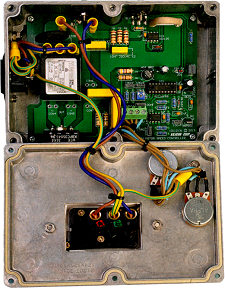 This very advanced microcontroller design is ideal for use with power drills, strimmers, circular saws, machines, routers or any appliance having universal (brush-type) motors, and offers exceptionally smooth and precise speed control, great performance under load or at low speeds, soft-starting, RFI suppression and over-current limiting. It has a full 10A 230V rating.
This very advanced microcontroller design is ideal for use with power drills, strimmers, circular saws, machines, routers or any appliance having universal (brush-type) motors, and offers exceptionally smooth and precise speed control, great performance under load or at low speeds, soft-starting, RFI suppression and over-current limiting. It has a full 10A 230V rating.
Not suitable for induction or shaded-pole synchronous motors (e.g. bench grinders or some sharpeners, record player motors, some garden tools and DIY equipment like pressure washers) nor motors already incorporating basic electronic speed control (e.g. some power drills). A super-sophisticated Universal-motor power controller that will appeal to the advanced hobbyist. In Part 2 this month, constructional details are provided along with some troubleshooting tips.
Teach-In 2015 (Part 3)
Our latest educational series is aimed at anyone wishing to develop a detailed understanding of linear discrete semiconductor devices and how they are used in a variety of circuit applications.
Transistors are the nuts and bolts of many applications and in Part 3, various classes of amplifier categories (Class A, B, AB and C) are examined. A design for a Headphone Amplifier is then offered. Don’t miss out on this fundamental transistor amplifier theory – follow Teach-In 2015 for a modern explanation of these circuitry essentials.
Teach-In 2015 - Please Take Note
Unfortunately, the silkscreen outline for the (optional) jack connector used in our simple headphone amplifier has also appeared on the PCB track layout (Fig. 3.12 on page 42, April 2015 issue.) Consequently five small solder bridges are required to bridge some track breaks. See May 2015 issue for details. Boards purchased from the EPE PCB Service are correct and need no modification.
PIC n' MIX
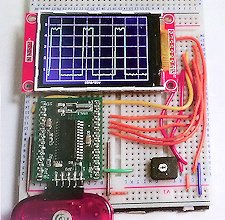
Looking at a larger display for the LPLC board that offers more on-screen real estate to show off your digital data.
Special Review: RPI16OUT board

Reviewed this month, from Zeal Electronics this optically-isolated 16-bit digital output board for the Raspberry Pi is designed for noisy or harsh environments. Our Pi- expert puts it under the microsocope.
Audio Out

More vintage audio electronics and how germanium devices were used in audio circuitry.
Also in this issue:
- Techno Talk – Nature’s influences and electric bacteria
- Net Work – how to publish your own paperback on Amazon
- Circuit Surgery – Part 2 of an in-depth look at constant current sources
-
Please Take Note
Circuit Surgery In Fig. 8, the op.amp’s non-inverting input should be labelled ‘VIN’
- Interface – a 12 bit serial A/D converter using the MCP3204
- Max’s Cool Beans – introducing USB Type-C
Next month: in May 2015's issue: Low-cost Precision 10V reference for DMMs; Deluxe Fan Speed Controller; RGB LED-strip Driver; Teach-In 2015 Part 5 - distortion and constant-current sources. Contents may be subject to change.
EPE is packed with practical electronics projects and theory for the hobbyist. You can order a printed copy of EPE for delivery to your door (worldwide), or try the PDF Version (needs Adobe Reader for Windows), or the Pocketmags for your mobile device. Subscribe now!
Source code file 0415.zip
Please Take Note
Circuit Surgery April 2015 In Fig. 8, the op.amp’s non-inverting input should be labelled ‘VIN’
Teach-n 2015
Unfortunately, the silkscreen outline for the (optional) jack connector used in our simple headphone amplifier has also appeared on the PCB track layout (Fig. 3.12 on page 42 April 2015 issue.) Consequently five small solder bridges are required to bridge some track breaks. See May 2015 issue for details. Boards purchased from the EPE PCB Service are correct and need no modification.
PCB artwork
As from July 2013 issue PCB artwork is available free to subscribers only.
Non-subscribers may purchase artwork files for a nominal sum. Please contact our Orders Dept for information or to place an order.
EPE Printed Circuit Boards
We can supply ready-made printed circuit boards (8-digit order codes) to the original design specification via mail order or from our Online Shop.

